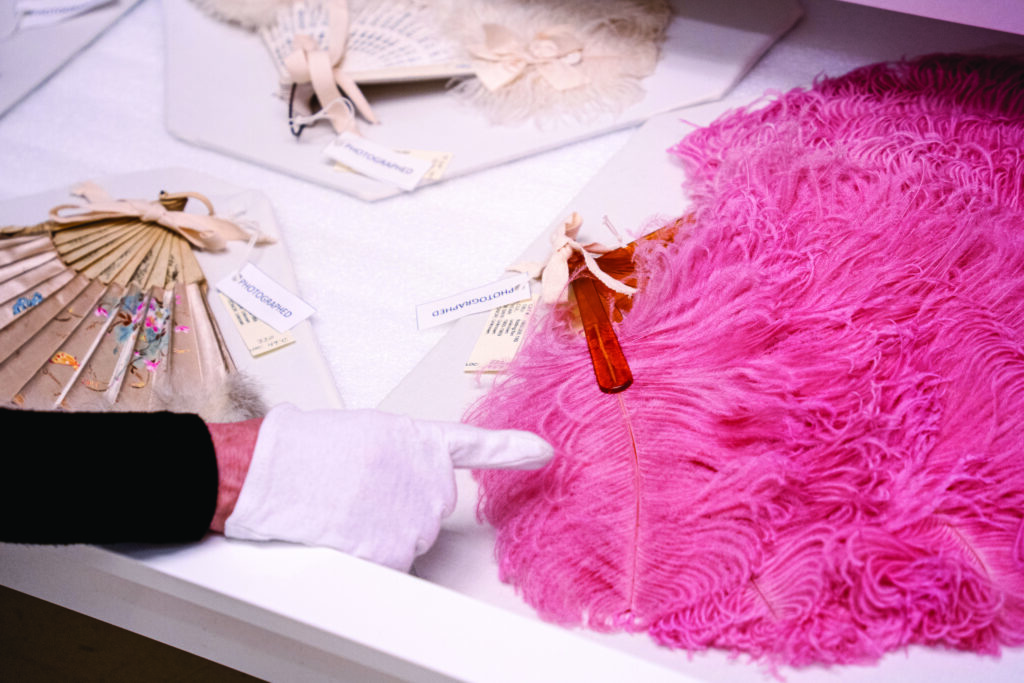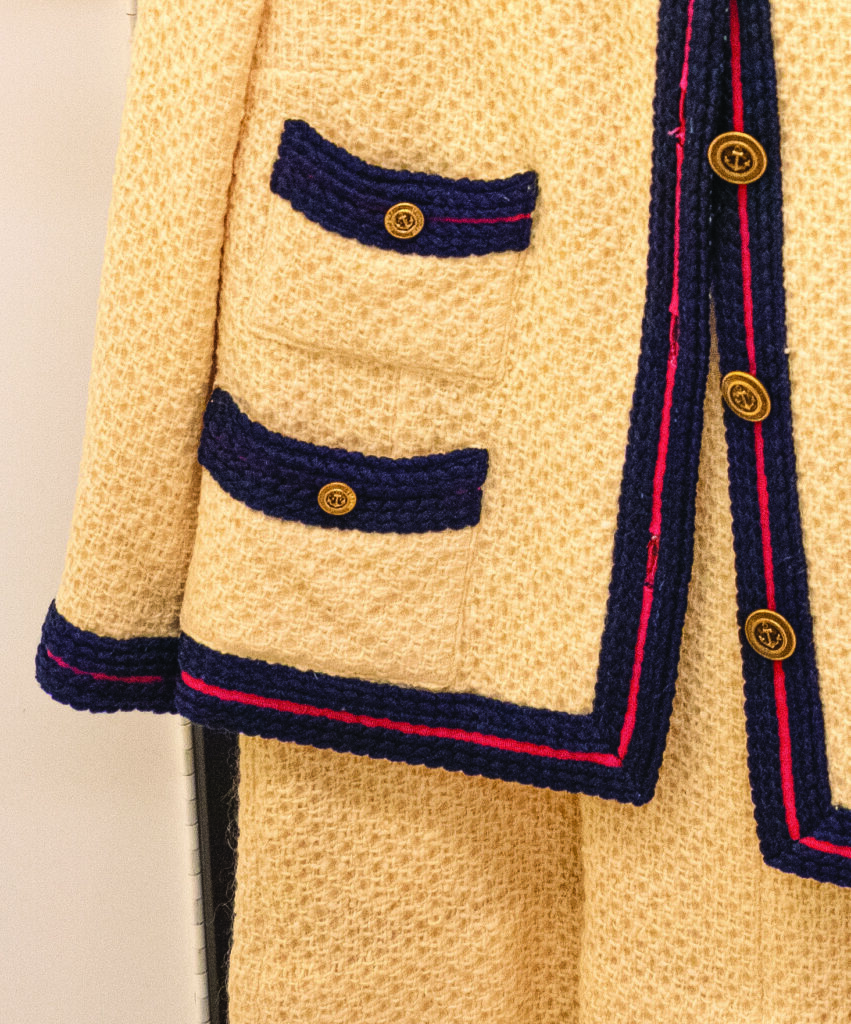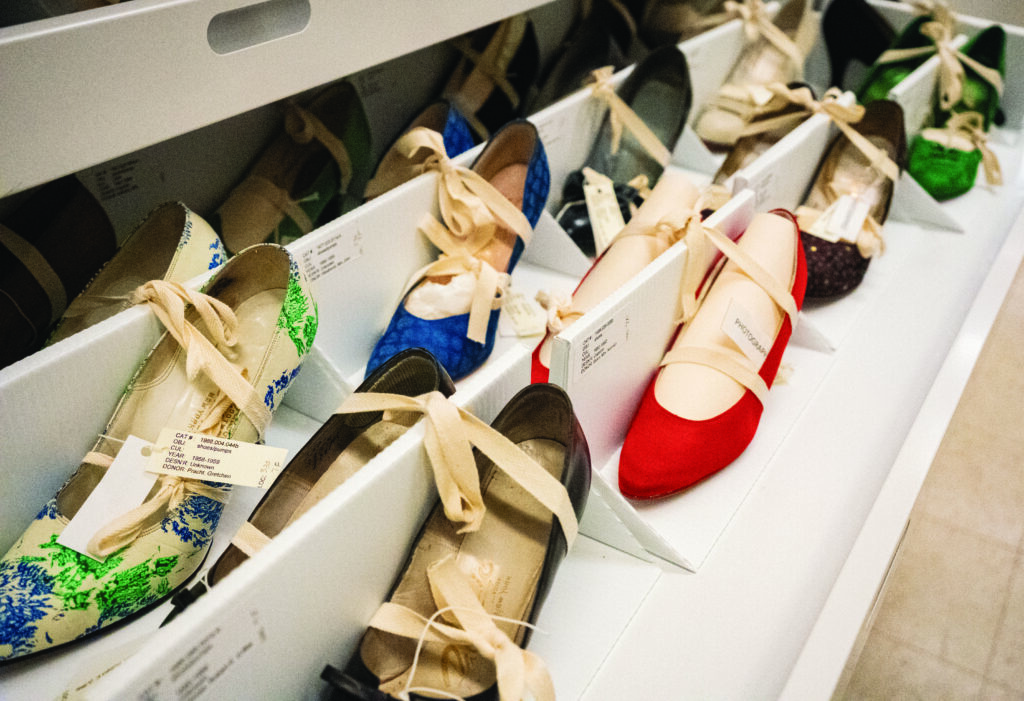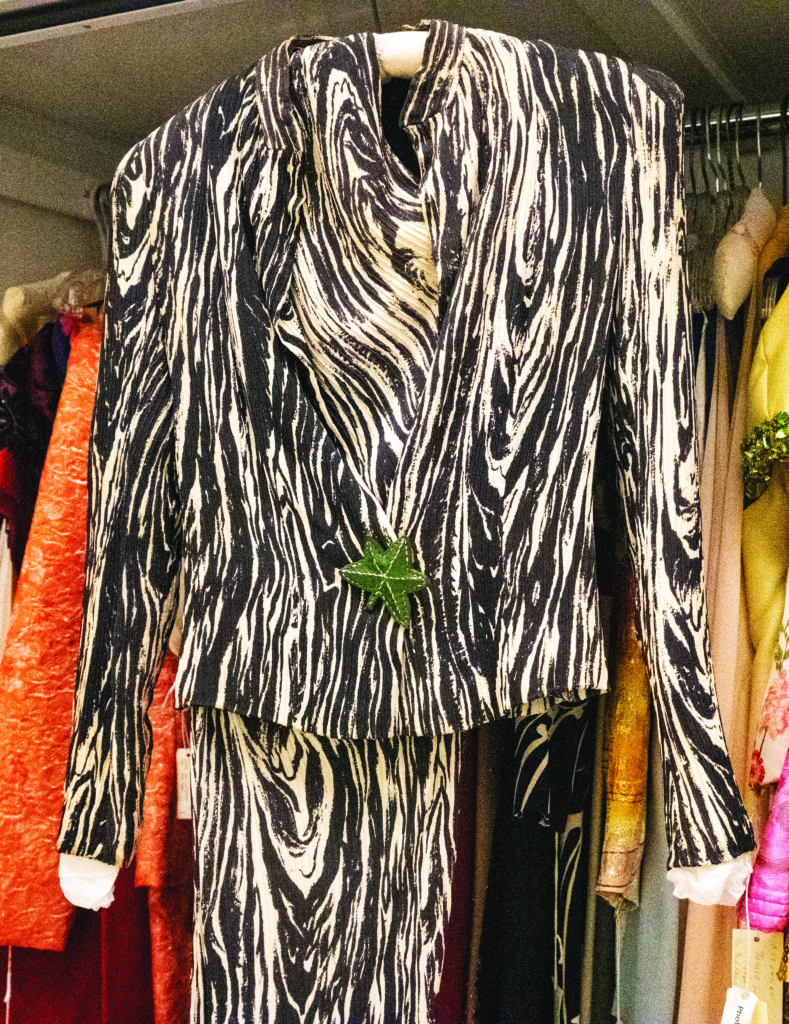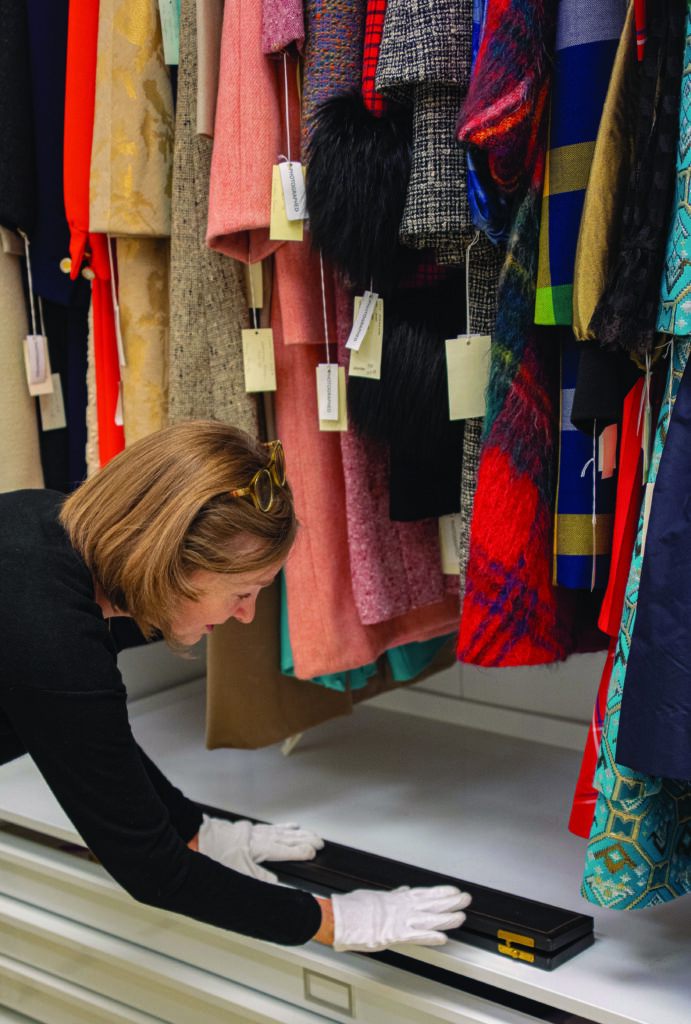By: Ava Van Hofwegen
Jean McElvain is a curator for the Goldstein Museum of Design responsible for developing its collection of fashion pieces, altogether around 30,000 articles of clothing, accessories and shoes. Each item is organized, labeled and stored, ensuring its preservation. The museum has been collecting items since the 1950s, despite not being established as a museum until the 1970s. The collection documents fashion history, trends and insights into culture around the world. Many of its pieces are received through donations, which McElvain researches and selects.
McElvain spoke to InFlux Magazine about the world of fashion and the process of curating a museum collection. Her comments have been edited for length and clarity.
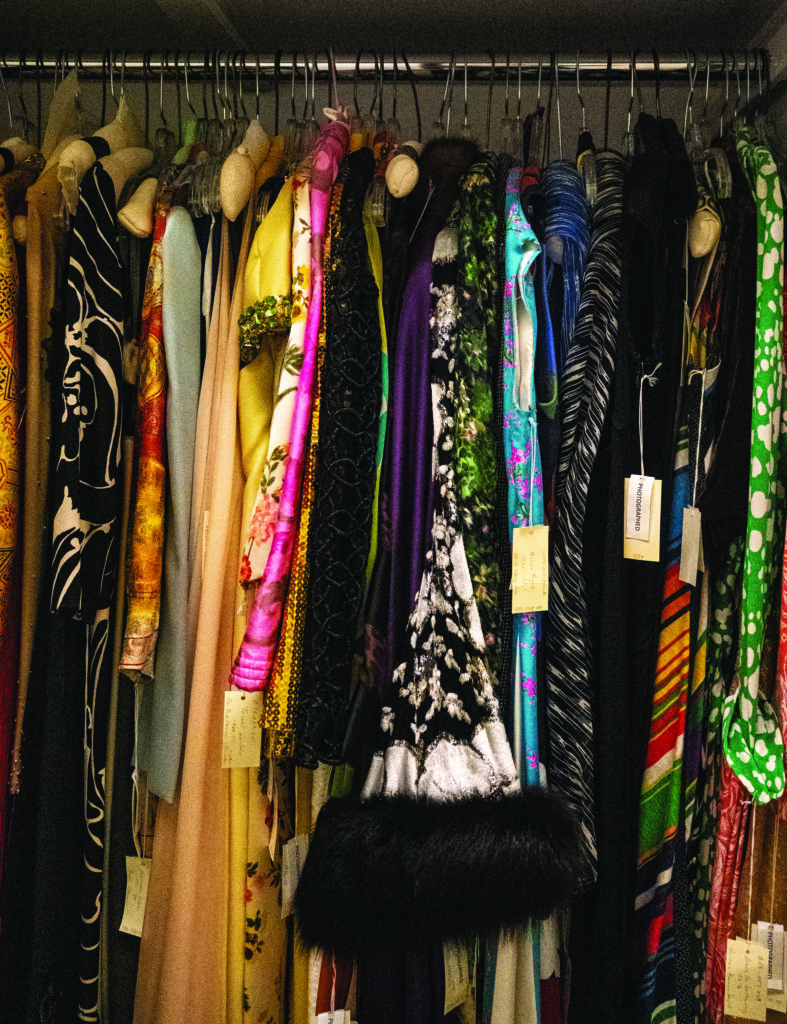
Q: What is your process for museum curation?
A: Curation has a nonlinear approach. I co-curated an exhibition last fall, Narrative Threads, based on an individual’s lifelong travel collection of textile objects from India. My process is to work with print resources in the library and compare those against the object. I reach out to the local community who might have expertise in that area, so that we can do right by the objects. If they’re from a cultural region outside of our own, we want to make sure that we’re working with a community that has first-hand knowledge of those pieces.
The exhibition was focused on embroidered pieces from a specific part of Northern India and Pakistan. There is a lot to look at and try to read from the objects themselves. You’re trying to pull out pieces that can tell a story so that people will be able to relate and react in a way that makes them curious.
So we have the information-gathering part of curation, and then trying to coalesce all these different sources back into a readable text, while trying to avoid language that feels overly jargony. We try to weave a narrative, no pun intended, that tells a story people can understand. We want to make sure that some people feel heard along the way.
Q: How do you see the development of function in design over fashion?
A: With fashion, people often overlay contemporary concepts of function and wear when looking at past garments. We just pulled garments for a class, from the mid-1800s and they said ‘Oh, they look so uncomfortable!’ Well, that’s almost not germane, because our idea of comfort is athleisure. It’s just not a paradigm that they were used to. The function of clothing over time has changed quite a bit. There’s always this competing idea of function and clothing. And what does function mean? Does it function socially? Does it function athletically? Does it stay on your body? Is it sexy? What are you trying to do with your clothing, I think, is the fascinating part of clothing.
Q: Why is design important?
A: Design is everything around us. If you’re thinking specifically of clothing, it’s so important that we can solve problems through design, whether it’s a garment problem or a global problem about access to water or access to resources. It’s important in terms of the iterative process. One thing about design is that there’s usually a budget associated with it. So there usually is a stopping point that’s mandated by the economy.
Design is how we get through our day and function, everything we do is touched by it
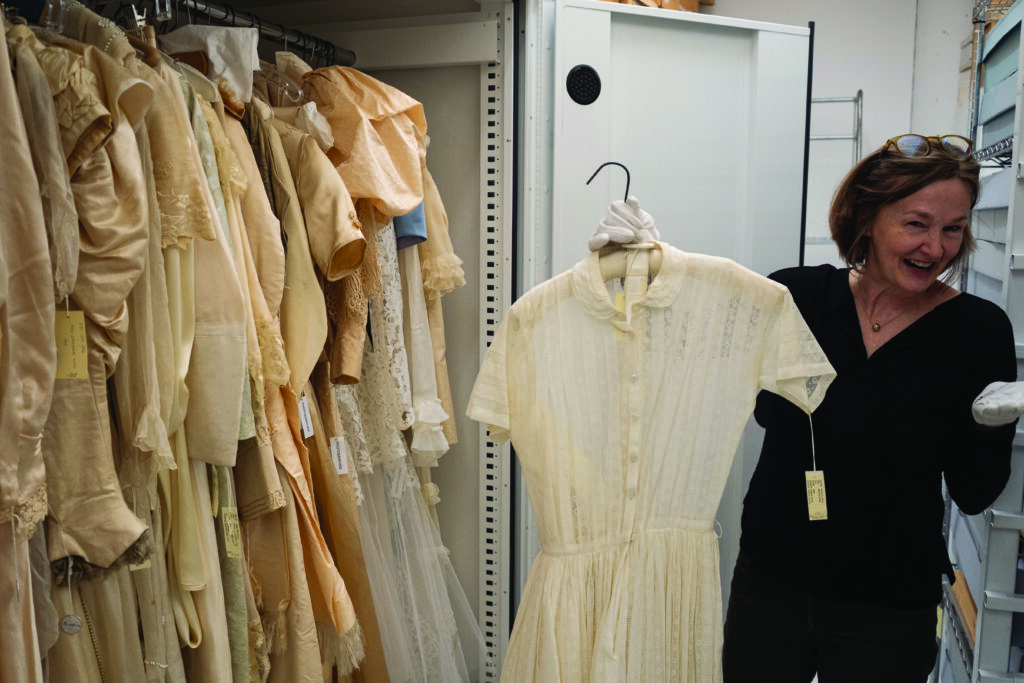
Q: Do you think fashion evolution is influenced more by the public and its needs or is it mainly the designers’ influence?
A: I think it’s very mutual right now. For a long time, there was this theory that in the 1700s, 1800s and 1900s, it was the hierarchically powerful people who would dictate fashion and everybody would try to copy them. During the 20th century, that began to be more overtly challenged. It might have been challenged previous to the 1960s; it’s more talked about as a recent phenomenon.
Street culture is influential to designers. Before hip-hop, designers weren’t making certain silhouettes. Punk was a street movement and became stylish. People who are trying to be fringe or alternative are always trying to run from mass manufacturing of the style. Big luxury houses tend to pull on some of the historic fashion lore. If you look at Chanel, they’ll still produce lines every year that look like they have the chunky jacket from the 1960s. You could argue that it is more embedded in a designer-down kind of structure.
I think it’s strongly influenced by what celebrities wear, what your friend wears, what you see in the street. The finances of fashion too are influential. There is much more accessible clothing at a lower price point. From my perspective, it’s almost more strongly coming from the bottom up.
Q: If there was a fire, what would be the one piece you would save?
A: What’s my favorite? That is so hard, because often in curating, you’re trying to eventually remove yourself emotionally from pieces. I have a special fondness for our Fortuny gowns, from the 1920s and 30s that are absolutely irreplaceable. Same with our Schiaparelli gowns, which are irreplaceable, but that’s a hard question.
It really is much more valuable as a collection. Individually, a 1950s makeup compact, you’re like, cool, but so what? But if you have 10 of them, then you start to see variation. You can start to read more from them by comparison.
